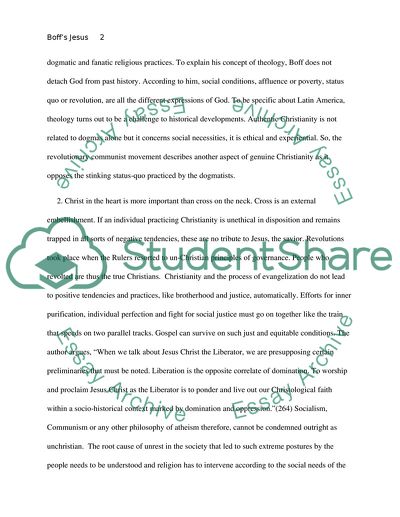Cite this document
(“Analysis of Boffs Jesus Christ, Liberator and Cones The Cross and the Book Report/Review”, n.d.)
Analysis of Boffs Jesus Christ, Liberator and Cones The Cross and the Book Report/Review. Retrieved from https://studentshare.org/religion-and-theology/1776713-boffs-jesus-christ-liberator-and-cones-the-cross-and-the-lynching-tree
Analysis of Boffs Jesus Christ, Liberator and Cones The Cross and the Book Report/Review. Retrieved from https://studentshare.org/religion-and-theology/1776713-boffs-jesus-christ-liberator-and-cones-the-cross-and-the-lynching-tree
(Analysis of Boffs Jesus Christ, Liberator and Cones The Cross and the Book Report/Review)
Analysis of Boffs Jesus Christ, Liberator and Cones The Cross and the Book Report/Review. https://studentshare.org/religion-and-theology/1776713-boffs-jesus-christ-liberator-and-cones-the-cross-and-the-lynching-tree.
Analysis of Boffs Jesus Christ, Liberator and Cones The Cross and the Book Report/Review. https://studentshare.org/religion-and-theology/1776713-boffs-jesus-christ-liberator-and-cones-the-cross-and-the-lynching-tree.
“Analysis of Boffs Jesus Christ, Liberator and Cones The Cross and the Book Report/Review”, n.d. https://studentshare.org/religion-and-theology/1776713-boffs-jesus-christ-liberator-and-cones-the-cross-and-the-lynching-tree.


